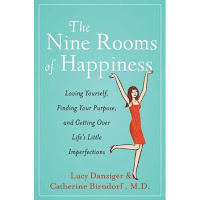Recombinant VWD Product on the Horizon?

I just received word that Baxter has started Phase III of its recombinant VWD product. The investigational product is BAX 111, the first recombinant von Willebrand product in clinical development.
Currently, we have Humate-P (manufactured by CSL Behring) and wilate (manufactured by Octapharma), which are both plasma-derived. Wilate was the first product indicated for the treatment of bleeds in VWD patients. Humate-P has been the standard for years in the US. But don’t forget Alphanate (from Grifols), originally for treating hemophilia A bleeds, and now indicated for treatment of VWD patients (FDA-approved for surgical and/or invasive procedures in certain patients with VWD). Not FDA-indicated but sometimes effective is Koate-DVI (Grifols, distributed by Kedrion in US), because it has VWD in it, along with FVIII.
No one can say that America doesn’t have choice!
It’s always exciting when there are new products on the horizon. Please remember too that all US FDA-approved drugs are considered both safe and effective for treatment of bleeding for VWD patients.
The Baxter study will assess a minimum of 36 patients in trial sites in the United States, Canada, Europe, Australia, Japan and India. Information about the trial including enrollment is available at www.clinicaltrials.gov or by calling 1-805-372-3322.
I am quite sure, that when and if the product hits the market, Baxter will think of a catchy name for BAX 111!
For more info, call Marie Kennedy, (805) 372-3543– I know her and she is a very trusted source and nice person!
Interesting Book I Just Read
The Nine Rooms of Happiness
by Lucy Danziger and Catherine Birndorf
This perky, feel-good book uses a clever metaphor for getting women to think about their life, stress level and aspirations: think of your life as a house, and each segment of your emotional life is a room. Basement (memories, childhood), Family room (family), living room (friends, relationships), bathroom (self-esteem, health) etc. In which room are you? Where do you have the most problems? Is your bathroom too close to your family room? In a sense, the authors are asking us to compartmentalize, ironically a task usually associated with men. The authors use real life vignettes from women of varying backgrounds and situations to reveal some universal anxieties women share, and then applying the “house” metaphor to show how they can get unstuck from their unhappy situation, and move into a different room, and therefore happiness.
Sound simplistic? It is. The book is okay for those new to the self-help genre and studying relationship and introspection; I think they will read it and come away feeling understood, optimistic and less alone with their unhappiness. But to someone who is well versed in more serious relationship books (Harriet Learner has excellent ones), this is psycho-lite. The book is based on many presuppositions: woman must have female friends, you must keep old friends in order to be happy (even if they drive you batty?), women are prone to anxieties, women are unhappy. I found the book putting much blame on women for their condition, which I am sure the authors didn’t intend! For example, why should a woman be made to feel in “denial” about getting older, or narcissistic because she tires of her long-time friends who are aging, speaking about grave plots, and do nothing to engage in life, while she is full of spirit and wants to take on life and adventures? Why is that a “problem,” as the authors clearly state? They insist she needs to keep these stick-in-the-mud friends while cultivating new friends. What is she doesn’t have time? What if some people really are just jerks and not just a result of a relationship problem stemming from “regression,” or “transference” or “denial”? The authors seem to have a psycho answer for everything, and not a street-smart, pragmatic way of viewing relationships.
A cookie cutter response to each vignette wears thin, as do the clichés, which run rampant (oops, there I just did it) in the book. “To have a relationship, you first have to relate” –really? The model is a clever idea, using a house, and no doubt some will feel helped by this book. It’s gotten pretty mixed reviews. Maybe good for novices, but when you finish this, move on to some serious relationship books, as this one is pop-psychology, cutesy and sends mixed messages. If you challenge the presuppositions, half the book is sunk. Two stars.

